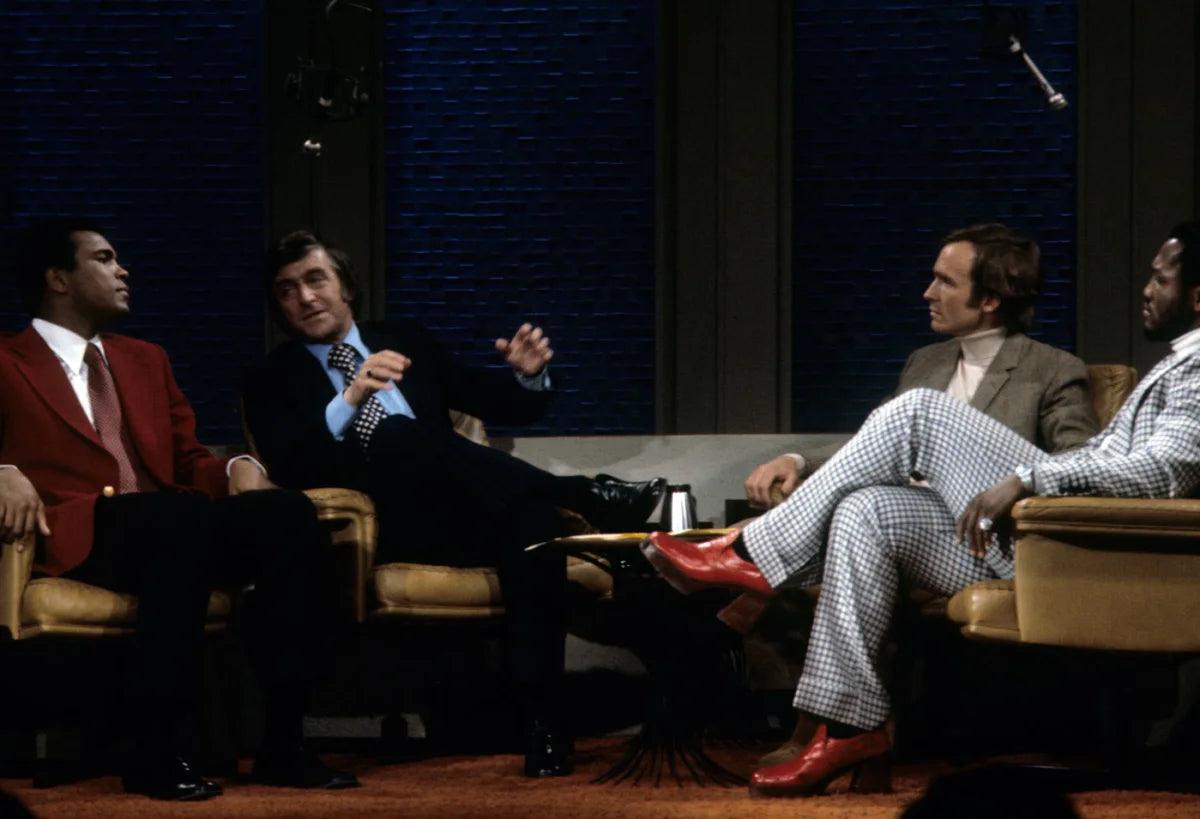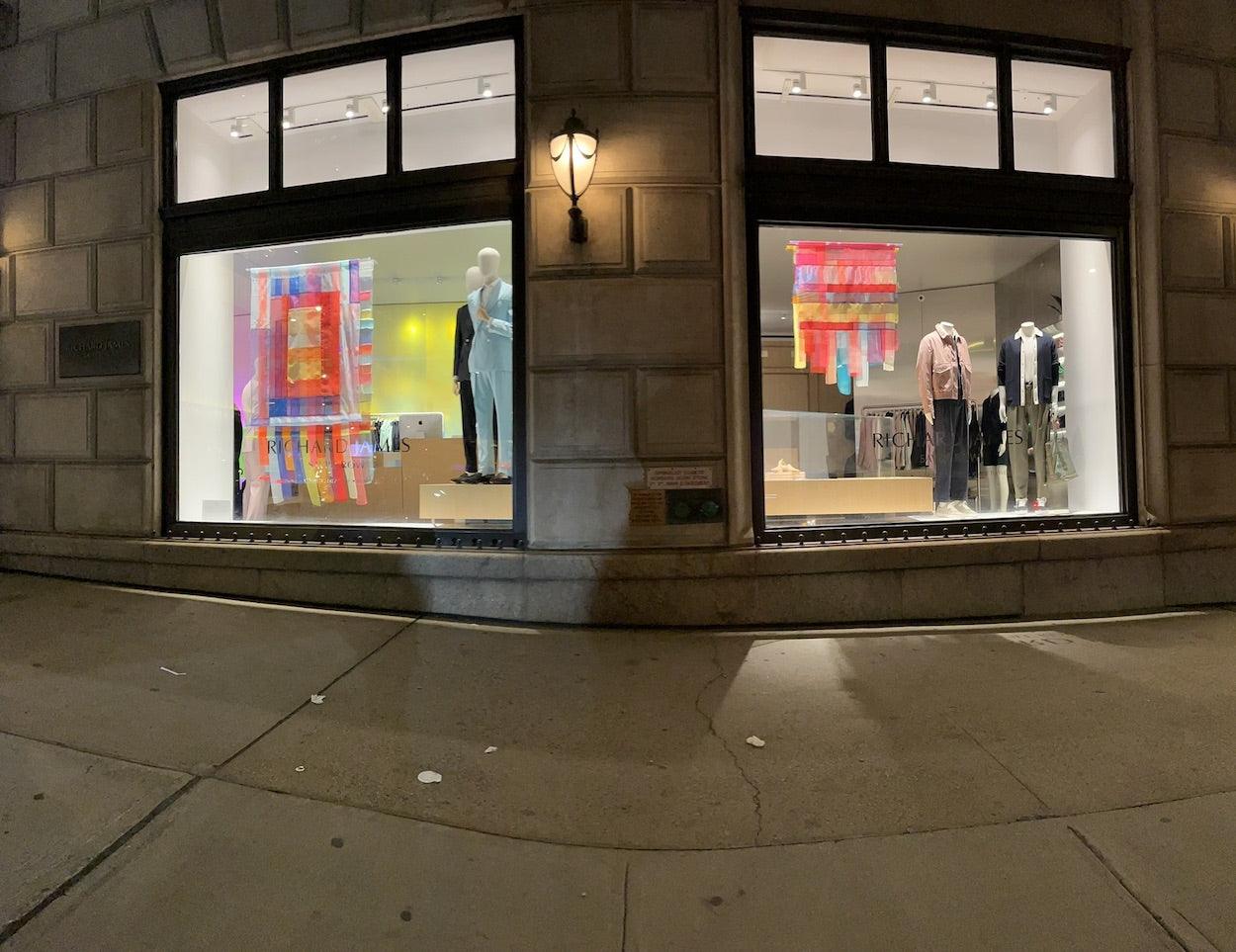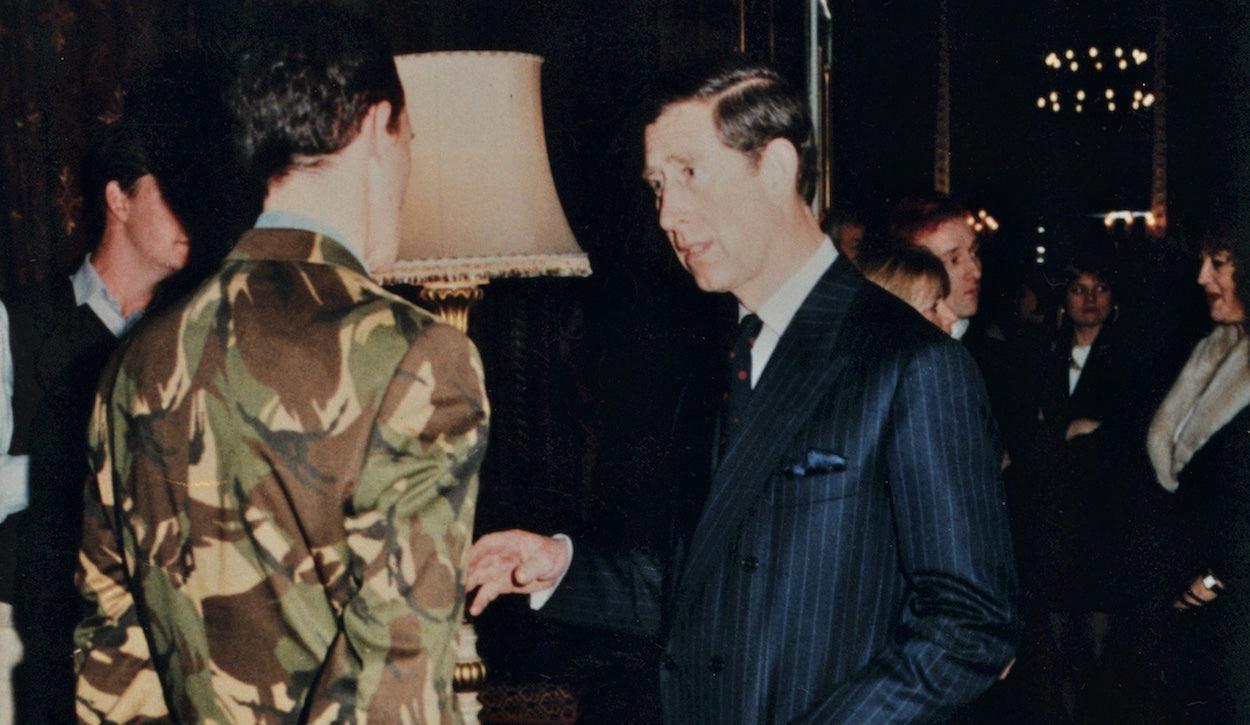
That Chat Show Look
Chat shows. A host and some guests. A simple, yet immutable format which has held a place on our screens for over half a century. Here at Richard James we have dressed countless personalities who have adorned the sofas of some of the most famous shows past and present.
The heyday of chat shows came in the 1970s. Titans of the genre such as Parkinson, Dick Cavett (below with Jimi Hendrix) Johnny Carson and Tom Snyder lead the way with their inquisitive charm. They attracted countless icons and trailblazers into their realm. As unambiguous as the appeal of these shows was back then, when delving deeper into the aesthetic and tailoring featured what can be found is an intangible sense of style that is making a rapid resurgence.

In the UK Michael Parkinson was the leading figure of the chat show genre. Presenting the self-titled Parkinson for over three decades, he attracted true, international giants of stage, screen, sport and more. Under the watchful guise of the BBC, the laconic Yorkshireman adopted a classic tailored look, wearing block-coloured suits and classic shirting paired with some pretty eccentric ties (a classic Richard James look). Taking the limelight away from himself, his wardrobe although now extremely on-trend in terms of silhouette, never distracted from the guest who always remained the priority.
By comparison, Parkinson’s American counterparts were much more liberal in their sartorial choices. Dick Cavett and Johnny Carson would often be seen wearing boldly checked blazers with contrasting trousers and loud ties. They also adopted slightly more conservative looks at different points in their career, toning it up and down at their own digression. Above Dick Cavett can be seen wearing something not dissimilar to our current-season light gold open-weave suit.
In the 1970s trousers were generally cut with a high rise, close on the thigh and flared at the bottoms. Jackets were broad with roped shoulders and featured wide lapels and were much longer than their modern counterparts. Although the ‘70s aesthetic became fashion suicide in the decades that followed, a few stylish cohorts remained loyal to the flamboyant style over the years, long enough to witness its inevitable return to popular culture. Tom Ford led the resurgence when he took over as creative director of Gucci in 1994. He reintroduced the aesthetic into the brand's now synonymous tailoring range, reinvigorating it with his customary elegance and sex appeal. Patrons of the style such as Jared Leto and, more recently, Harry Styles have shone a more mainstream light onto the style meaning catwalks, covers of magazines, rock stars and others are all now, once again, showcasing strong tailored looks in the spirit of the 1970s.
The chat show-heyday look can easily be achieved with the Richard James Heritage block (below). The Heritage block is a hugely popular style favoured by many of our customers and has been adopted by many high-profile clients for chat shows and red-carpet events all over the globe.
Compared to our other famous block, the Hyde, our Heritage block comes as a double-breasted jacket with large peak lapels, and the trousers are cut with a higher rise, feature double pleats, and are a wider width in the leg. The result is a classic yet subtle nod to tailoring of days gone by. Like myself and others who work in the Savile Row store, if you are someone who favours a slightly more vintage silhouette such as that seen on the chat shows of the ‘70s, you can achieve it by making a few simple alterations to the Heritage block. This block allows our alterations tailors the room to take in the inside leg seams (taper) at the top of the trousers and reverse the effect at the bottom by letting the seam out, thus forming the classic flared effect synonymous of the era. Paired with its matching double-breasted jacket the look is complete. And it remains as stylish and elegant today as it was some fifty years ago.
On a side note it seems only right to mention the colour so commonly chosen as a backdrop to interviews of the era, which enabled the tailoring to stand out so vividly. A colour that only now (perhaps rightfully) has been consigned to the archives. Perhaps the only redeeming feature of the dark mustard beige seen below is that it is quite literally so dull that anything or anyone appearing close to it could only appear drastically more interesting by comparison.

Nowadays it could be argued that the interview process has become increasingly incredulous, focusing more on outlining the host as the enigmatic star instead of their guests. Interviewers from the ‘70s would lead with intimate and purposeful questions and allow their guests to speak for long periods in order to gain an insightful understanding of them. A profound question would be served and the host would slip back into the neutral ground of their brown leather clad chair, slowly crossing their legs, perhaps, as they did so. A long drag on a cigarette would be countered with a quick flick of ash as the guest would momentarily ponder the question posed. The competence of the host led to not only a more gripping interview, but meant a more elevated style was adopted by both parties out of respect for the occasion.
Today in the UK we have two leading forces carrying the baton for the chat show: Graham Norton and Jonathan Ross. They both still hold prime-time slots and still pull in millions of viewers. However, if us Brits can claim to have a soft spot for the chat show format then the United States’ relationship with the genre goes much further. The number of shows within the same remit is way over double our own, and the fandom status of the hosts is akin to that that was once reserved for Hollywood movie stars. Jimmy Kimmel, Stephen Colbert, Ellen DeGeneres and Jimmy Fallon - to list just a few – are all flourishing with their own take on the classic chat show formula. And as their popularity only increases, tailoring has and always will be the chosen way to dress for such occasions.
By Liam Farren




